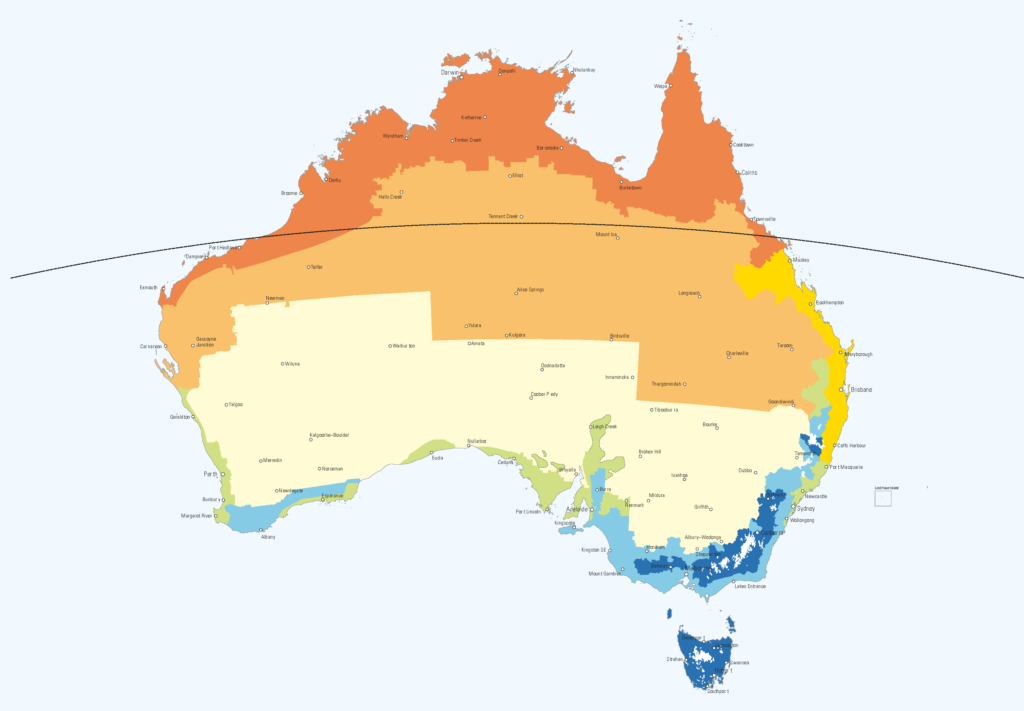
What is R Value? How does carpet influence R Value? And what is the best R Rating to look for when insulating under your floor? We’ll walk you through it.
Underfloor insulation is very important when it comes to keeping your home warm in winter and cool in summer. It creates a barrier that protects your living space from the air flowing beneath your home, which means your floor will be the same temperature as inside rather than outside.

R Value represents for ‘resistance to heat’, which is another way of measuring how well insulation can stop heat flow – whether it’s flowing out of your home in winter or into your home in summer.
So, What Is A Good R Value Rating Vs. A Bad Rating?
It’s simple, the higher the number, the better the rating. While an uninsulated timber floor is rated at only R0.7, with the addition of insulation, carpet and underlay, this can be increased to as much as R3.5 (with the addition of R2.5 polyester underfloor insulation).

The Australian Building Codes Board is in charge of the standards and regulations surrounding the technical construction of buildings in Australia, including what we put under our floors.
The level of underfloor insulation required in your home is dependant on the climate zone that you live in. In Victoria, zones fall between Zone 4 and Zone 8 as shown in this insulation R Value chart.
 Visit www.yourhome.gov.au for more detailed information about the map
Visit www.yourhome.gov.au for more detailed information about the map
The Building Code of Australia (BCA) recommends the following minimum R Values for suspended timber floors (that is, floors that allow any air flow beneath the home, even through the gaps in side boards).
- Zone 4 (pale yellow) – R1.0
- Zone 5 (green) – R2.25
- Zone 6 (light blue) – R2.25
- Zone 7 (blue) – R2.75
- Zone 8 (white) – R3.25
How Do You Work OutThe R Value Of Your Floor?
The R Value of your floor is calculated by adding together all of the different components of your floor.

This includes the floorboards, any carpet and underlay and, of course, the level of underfloor insulation you have.
Timber Floor without Carpet or Insulation

Timber Floor Without Carpet or Insulation has an R Value of 0.7
As you can probably guess, an uninsulated timber floor will achieve a very low R Value rating, as it doesn’t provide any extra protection against heat transfer at all.
A normal timber floor is very thin, just 19mm in fact, and timber is a very poor insulator, so cold moves through it very easily. With no carpet up above and no insulation down below, a timber floor will be rated at just R0.7 and be the same temperature as outside.
Uninsulated Timber Floor with Carpet

Uninsulated Timber Floor with Carpet has an R Value of 1
It’s not uncommon for people to think that having carpet means that you don’t need any additional insulation. However, when it comes to protecting your comfort, unfortunately carpet and underlay can be deceptive.
While it may feel nicer to touch with bare feet, carpet only provides an additional R value of R0.3, making it only R1.0 when combined with the timber floor.
Timber Floor with R2.0 Insulation

Timber Floor with R2.0 Insulation has an R Value of 2.7
The thermal performance of underfloor insulation is measured in R Value which makes it very easy to calculate what rating you can achieve.
As we know, a timber floor is rated R0.7, so with the addition of R2.0 insulation you will achieve an overall rating of R2.7. This is a vast improvement to your thermal comfort.
Timber Floor with Carpet and R2.0 Insulation

Timber Floor with Carpet and R2.0 Insulation has an R Value of 3.0
This is the highest R Value rating achievable with R2.0 underfloor insulation. With the carpeted timber floor rating at R1.0, the addition of R2.0 insulation will offer an overall rating of R3.0.
This combination will keep your winter warmth in and the summer heat out, meaning you’ll use less expensive gas and electricity to keep your home comfortable.
Timber Floor with Carpet and R2.5 Insulation

Timber Floor with Carpet and R2.5 Insulation has an R Value of 3.5
R2.5 insulation is a premium quality insulation preferred by our thermal comfort experts. It is a very popular choice for households working towards bringing their energy bills down to zero without compromising their comfort.
Even without carpet, R2.5 insulation can bring your floor’s R Value up to R3.2 and with the addition of carpet, a floor that was rated at just R1.0 will become R3.5, which is an improvement of 250%.
What Type of Underfloor Insulation Should I Install?
ecoMaster only ever recommend polyester insulation as it’s proven to be far superior to other materials available.
When stapled firmly under a floor, polyester won’t sag, move or compress; holding the same R Value as the day it’s installed for the lifetime of your home. It’s non-allergenic, rodent and mildew resistant, safe for kids and pets and can be handled without gloves!
What’s Next?
We hope this article has helped you learn how to use simple ways to save on your utility bill. This in turn will help you on your energy and thermal efficiency retrofit journey to make your home more comfortable all year round, and reduce your costs and carbon emissions.
Next, explore Underfloor Insulation: How to Install Underfloor Insulation the ecoMaster Way.
If you found this article helpful, then please subscribe to our YouTube Channel. You’ll find many more helpful “How To” videos there. You can also follow us on Facebook and Instagram to stay in the loop.For more great information on how to make your home more energy and thermally efficient subscribe NOW to ecoBites. ecoBites are free bite size chunks of the latest energy efficiency information making it quick and easy for you to absorb.

Recent Comments